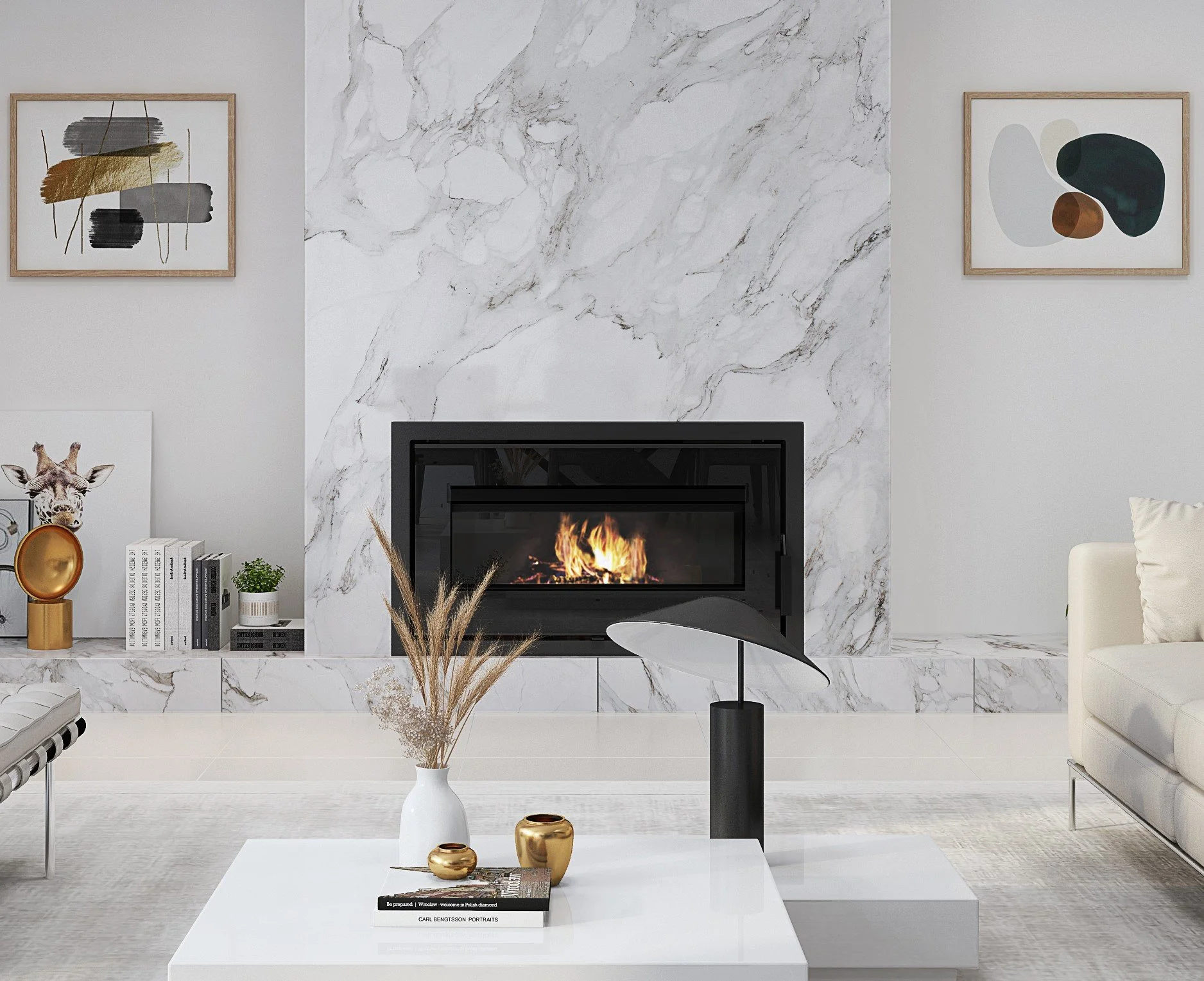Choosing the Right Fireplace Cladding: A Guide to Stunning & Safe Finishes
A fireplace is often the focal point of a living space - a feature that combines warmth, style, and architectural presence. Whether it’s an indoor centrepiece or an outdoor entertainment anchor, the finish around your fireplace plays a major role in defining its character. The right cladding doesn’t just look beautiful; it also needs to be durable and safe under high temperatures.
Here’s a guide to some of the most popular and effective fireplace cladding materials, and what to consider when specifying or selecting them.
1. Natural Stone
Timeless, textured, and durable.
Natural stone remains a classic choice for both contemporary and traditional fireplaces. Options like schist, basalt, limestone, or travertine create a sense of permanence and depth.
Best for: Feature walls, rustic or luxury designs.
Benefits:
Excellent heat resistance
Low maintenance
Natural variation creates unique character
Tip: Seal porous stone to prevent soot absorption and staining.
2. Brick
Warm and characterful.
Brick is a versatile and cost-effective option that offers charm and texture. Whether you go for traditional red brick, tumbled reclaimed brick, or sleek blackened styles, it can be used to complement a wide range of interiors.
Best for: Traditional or industrial interiors.
Benefits:
Excellent thermal properties
Fire-resistant
Easily painted or limewashed for a modern update
3. Rendered & Painted Finishes
Clean and contemporary.
A smooth plaster or cement render creates a minimalist look that suits modern interiors. When finished in a high-temperature paint or limewash, it provides a subtle, sculptural surface.
Best for: Modern, architectural spaces.
Benefits:
Simple, clean aesthetic
Flexible design options (colour, texture, sheen)
Tip: Always use a heat-rated paint near the firebox to prevent cracking or discolouration.
4. Steel & Metal Panels
Sleek, modern, and industrial.
Blackened steel, corten, or brushed metal panels offer a bold, architectural statement. These materials pair beautifully with concrete or timber for a contemporary edge.
Best for: Modern and outdoor designs.
Benefits:
Durable and non-combustible
Creates a strong visual focal point
Works well with minimal detailing
Tip: Consider a matte or patina finish to reduce glare and add character.
5. Large-format Tiles & Porcelain Panels
Versatile and practical.
Advances in porcelain technology now allow for large-format slabs that mimic marble, stone, or concrete - ideal for sleek, seamless finishes.
Best for: Refined, modern interiors.
Benefits:
Heat and stain resistant
Lightweight installation
Wide range of colours and patterns
Tip: Choose tiles rated for high-temperature use near fireplaces.
6. Timber Accents (used with caution)
Warm contrast and natural beauty.
While timber shouldn’t be used directly adjacent to high heat zones, it can be incorporated as a mantel, screening, or cladding away from the firebox. Timber softens the overall composition and complements stone or metal beautifully.
Best for: Framing or accenting the main fireplace surround.
Benefits:
Adds warmth and texture
Complements other natural materials
Tip: Maintain safe clearances as per manufacturer and building code guidelines.
7. Concrete & Precast Panels
Modern, minimalist, and robust.
Concrete - whether cast in place, polished, or precast - provides a solid, monolithic aesthetic. It pairs effortlessly with steel, timber, or glass for a balanced, modern look.
Best for: Architectural and contemporary spaces.
Benefits:
Fireproof and durable
Can be tinted, textured, or patterned
Tip: Seal surfaces to prevent soot staining and to ease cleaning.
Design Insight
When selecting cladding, always consider:
Fireplace type: gas, wood, or electric
Clearances and heat zones as per manufacturer’s requirements
Overall interior palette and style
Maintenance and cleaning requirements
A well-chosen fireplace cladding not only elevates the space, it also becomes a lasting design statement.
Final Thoughts
Your fireplace finish should balance form, function, and fire safety. Whether you prefer the raw texture of stone, the industrial edge of steel or the sculpted simplicity of render, the key is selecting materials that complement your architecture and withstand the test of time.
Designs for Fires provides expert guidance on materials, clearances and design, so your fireplace looks stunning and performs safely.








